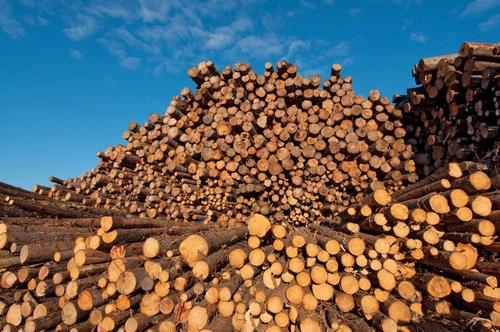Lumber Firms Applaud, Home Builders Angry As U.S. Moves To Double Canadian Lumber Tariffs
by Robert Dalheim of Woodworking Network
The U.S. Department of Commerce says it will seek to double tariff rates on most Canadian softwood lumber, angering home builders. New rates vary by company. West Fraser goes from 9 percent to 11.4 percent, Canfor from 4.6 to 21 percent, Resolute Forest from 20.3 to 30.2 percent, and J.D. Irving from 4.2 to 15.8 percent.
The overall increase is from 9 percent to 18.32 percent.
Home builders, who had been urging for a removal of tariffs, expressed their disappointment.
“At a time when soaring lumber prices have added nearly $36,000 to the price of a new home and priced millions of middle class households out of the housing market, the Biden administration’s preliminary finding to double the tariffs on Canadian lumber shipments shows the White House does not care about the plight of American home buyers and renters who have been forced to pay much higher costs for housing,” said National Association of Home Builders chairman Chuck Fowke.
“The administration should be ashamed for casting its lot with special interest groups and abandoning the interests of the American people. It knows that the lumber tariffs are nothing less than a tax on American home buyers, renters and businesses that rely on lumber products and they could not have come at a worse time. Lumber prices are already up more than 300 percent from a year ago. If the administration’s decision to double tariffs is allowed to go into effect, it will further exacerbate the nation’s housing affordability crisis, put even more upward pressure on the price of lumber and force millions of U.S. home buyers and lumber consumers to foot the bill for this ill-conceived protectionist action.
U.S. lumber producers on the other hand, applauded the decision.
“A level playing field is a critical element for continued investment and growth for U.S. lumber manufacturing to meet strong building demand to build more American homes,” said Jason Brochu, U.S. Lumber Coalition Co-Chair and Co-President of Pleasant River Lumber Company. “The U.S. Lumber Coalition applauds the Commerce Department’s continued commitment to strongly enforce the U.S. trade laws against subsidized and unfairly traded Canadian lumber imports.”
Canada, as one would predict, was also unhappy.
“U.S. duties on Canadian softwood lumber products are a tax on the American people,” said Mary Ng, Canadian Minister of Small Business, Export Promotion and International Trade. “We will keep challenging these unwarranted and damaging duties through all available avenues. We remain confident that a negotiated solution to this long-standing trade issue is not only possible, but in the best interest of both our countries.”
The decision comes as somewhat of a surprise. Home builders had been lobbying hard for a temporary removal of tariffs. Many Republicans had championed the NAHB’s claims. They had asked trade chief Katherine Tai to eliminate the tariffs.
It’s unclear how much the new tariffs will affect lumber prices.
Lumber companies say tariffs hardly make an impact.
“Lumber only makes up 4 percent of the cost of a new home— with near-zero impact on homebuyers,” the Lumber Coalition wrote in an opinion article published on Woodworking Network. “The NAHB’s claim that import duties cause today’s high lumber prices and therefore drive up the cost of homes is false. Supply and demand, not import duties, cause price fluctuations.”
The article was controversial, drawing in heavy scrutiny online.
The NAHB argued back, saying the Coalition was severely and intentionally underrating the cost of lumber in a home.
“If you walk into a home, you may notice that cabinets, windows, doors, and trusses are also often made of wood. And if you watch a home being built, you will see a lot of plywood and OSB being used for sheathing, flooring underlayment, siding, and interior wall and finishing, just to name a few uses. Also, builders do not in general buy lumber from sawmills, but from an intermediary like a lumber yard that operates with a profit margin.”
Tyler Durden
Tue, 05/25/2021 – 20:45
via ZeroHedge News https://ift.tt/3flFS9n Tyler Durden
